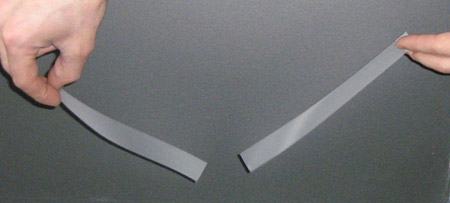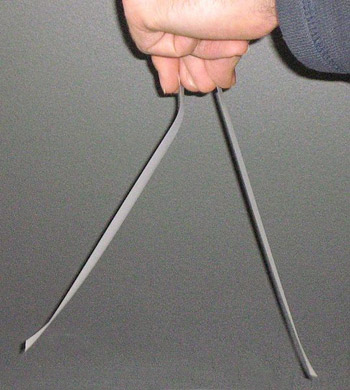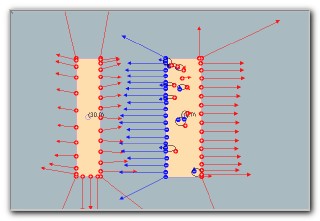The Tape: A Demonstration of a Fundamental Concept
You probably remember that there are two kinds of charges : a positive charge and a negative charge (Benjamin Franklin was the one who started calling them that). Basically, a negative charge is caused by excess electrons and a positive charge is caused by the absence of electrons to balance out the charge of the protons. These electrons come from the outer shells of atoms within a substance. It is important to note that when you "charge" something, you are not creating charges, you are just moving them from one place to another and the only kind of particles that move are electrons that have a negative charge. Essentially, you are adding or subtracting negative changes to create the positive, neutral, or negative charge on an object. This is the concept of conservation of electric charge:
The net amount of electric charge produced in any process is zero.
or
No net electric charge can be created or destroyed.
As you saw in the warm-up, when you stripped the tape from the table and put the pieces next to each other, the pieces move away from each other.

The act of the "stripping" of the tape actually caused a build up of negative charges (taken from the table) on each piece. Like charges repel, so both of the negatively charged pieces of tape wanted to be as far away from each other as possible.
Also, when the two pieces of tape were forced together—there was another movement of negative charge, causing one piece to become more positive and the other more negative. At that point, they attract one another because opposite charges attract.

In the following illustration, more examples of "static" charge are explored as well as charging by induction (which will be revisited later as well).
Click the image below to view the animation.
